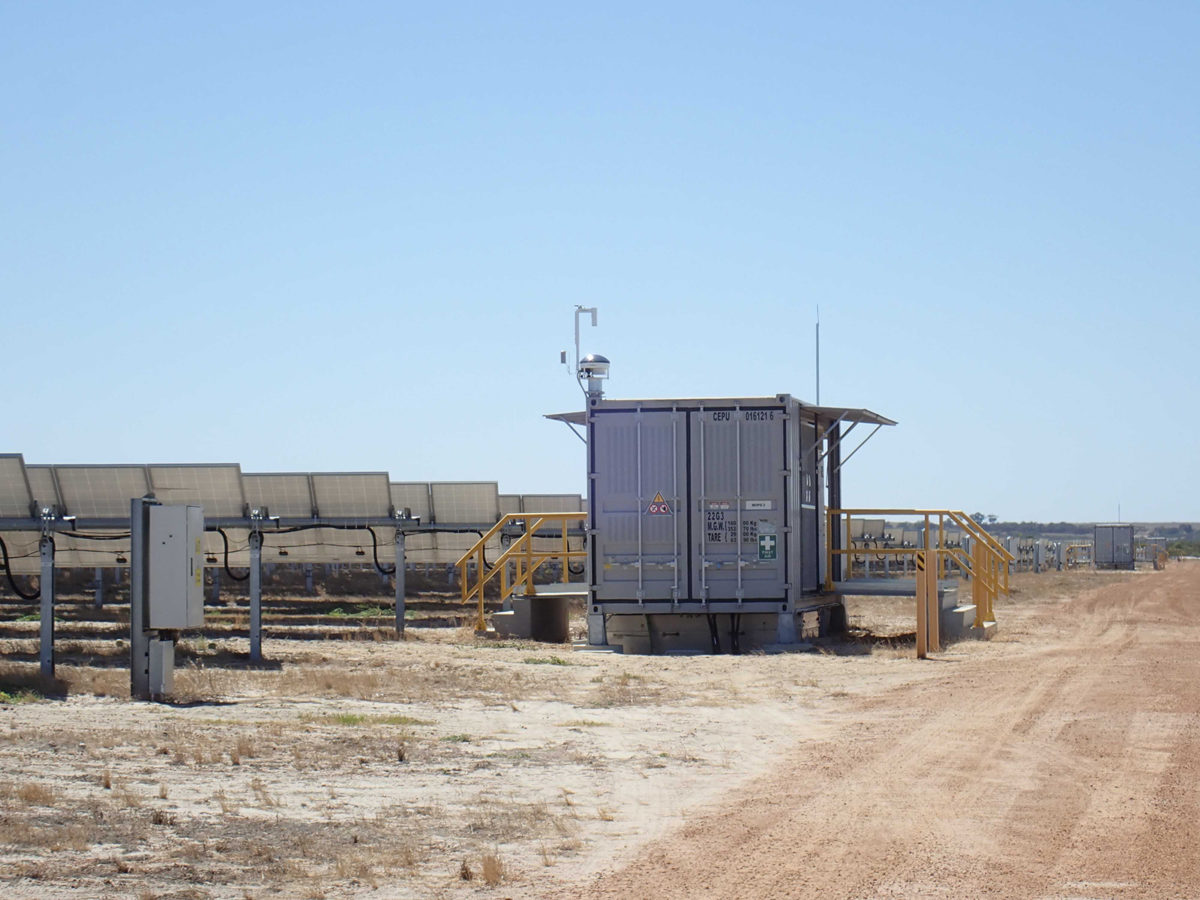In off-grid installations, solar energy can substitute up to 30 to 40% of annual fuel consumption. To achieve such penetration rates, the photovoltaic power plant is then combined with storage and forecasting systems using all-sky imagers, which play a key role in the energy management of the hybrid power plant.
In remote rural areas, communities or industrial sites often do not have access to the national grid for power supply. Electricity production is commonly based on diesel or heavy fuel oil (HFO) powered generators used to power a micro-grid. The use of hybrid systems based on renewable energies such as solar, hydro or biogas in a fuel-saving concept is receiving increasing attention by the industry. Hybrid solar-diesel-(battery) systems can rapidly achieve substantial fuel savings and thus significantly reduce the cost of electricity for micro-grids. These systems can seamlessly switch between power generation and storage in one system, ensuring a reliable and safe power supply to the mine. High-precision, very short-term solar forecasting using sky imagers plays a key role in managing the spinning reserve, planning the start-up of the generators, and managing the energy storage as required.
In a previous article on the issues and challenges of off-grid solar, the different applications of off-grid solar hybrid power plants were presented in the form of pilot projects in which production forecasts are being used. In this article, we share best practices for the implementation of such forecasting systems.
How to define the forecasting requirements for a solar hybrid project?
The value of forecasts is determined by the operational improvements they facilitate. Forecasting solutions are modular, and different configurations can be considered. It is therefore advisable to start by thinking about what levers can be used to optimize the hybrid power plant. On this basis, a specification of the forecasting service can be defined through communication between the different project stakeholders, including the forecasting provider but also the supplier of the Energy Management and Control System (EMS). The metrics used are also a crucial element to manage an off-grid hybrid installation with respect to its initial objectives.
Two main expectations are generally observed in the context of off-grid (battery) PV genset systems including a forecasting solution:
- Planning of the operation of the thermal units: The anticipation of the solar energy production within a few hours allows an efficient planning of the dispatching of the units, as well as an optimization of the battery charge and discharge times. This need is efficiently met by a combination of satellite forecasts and weather forecasting models.
- Short-term cloud detection: The installation of sky cameras on the power plant allows the collection of local and high resolution spatial and temporal information on the state of the sky. Thanks to these sky cameras, short-term alerts can be given on the fall of solar production in a 30-minute horizon. This information allows to start a generator in time to compensate for these ramps, or conversely to shut down generators if the sky is clear.
What is the expected return on investment of the forecasting system for an off-grid project?
Forecasts are a tool to improve the overall performance of the plant. Consequently, it is complicated to generalize the profitability of this tool, since it is sensitive not only to the climatic conditions of the site, but also to all of its components and the strategy of control. The implementation of simulations during the development phase of the project is therefore very important to optimize the dimensioning, the forecasting system and the power plant control scheme in order to maximize the cost-effectiveness of the project.
As far as forecasts are concerned, it is possible to reconstruct “forecasting backtests”, i.e. to generate forecasts based on historical data from satellite images and weather models. These backtests can be used as input data for the simulation of the complete operations of the plant. In order to test the performance of a sky imager, it is recommendable to set up a field test before commissioning the project.
How to make a successful transition from theory to practice?
In order to guarantee the successful implementation of the project, some preliminary precautions are to be taken beforehand. As far as the forecasting system is concerned, its compatibility with the energy control and management system must be validated. This involves testing the interface, the communication protocol and the specification of the information exchanged. It is also important to share a technical documentation of the project among all the stakeholders including :
- A description of the installation, including technical characteristics useful for modelling solar production ;
- A description of the available real-time data for forecast optimization ;
- An Interface Control Document (ICD). The ICD contains a comprehensive description of the interface of the forecasting service with the client’s IT infrastructure (types and formats of data exchanged, exchange protocol). The document serves as a basis for the forecaster to deploy the services and for the client to use them;
- A description of the network configuration ;
- All the information needed to install, test and operate the forecasting system.
The completion of all the previously mentioned steps will greatly facilitate the practical implementation of the project, limiting unexpected events. Finally, it is also important to choose a robust and field-proven all-sky imager, in order to limit maintenance operations. Off-grid projects are generally carried out in difficult environmental conditions, and on-site interventions are often complicated.
Reuniwatt assists its clients in setting up pre-project backtests, in the deployment of all-sky imagers (the company has developed two different models of sky cameras) and in identifying the most appropriate types of forecasts according to the specific characteristics of each project.
Article originally published in pv magazine France on 11/17/2020.
